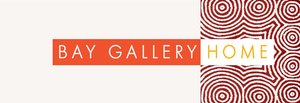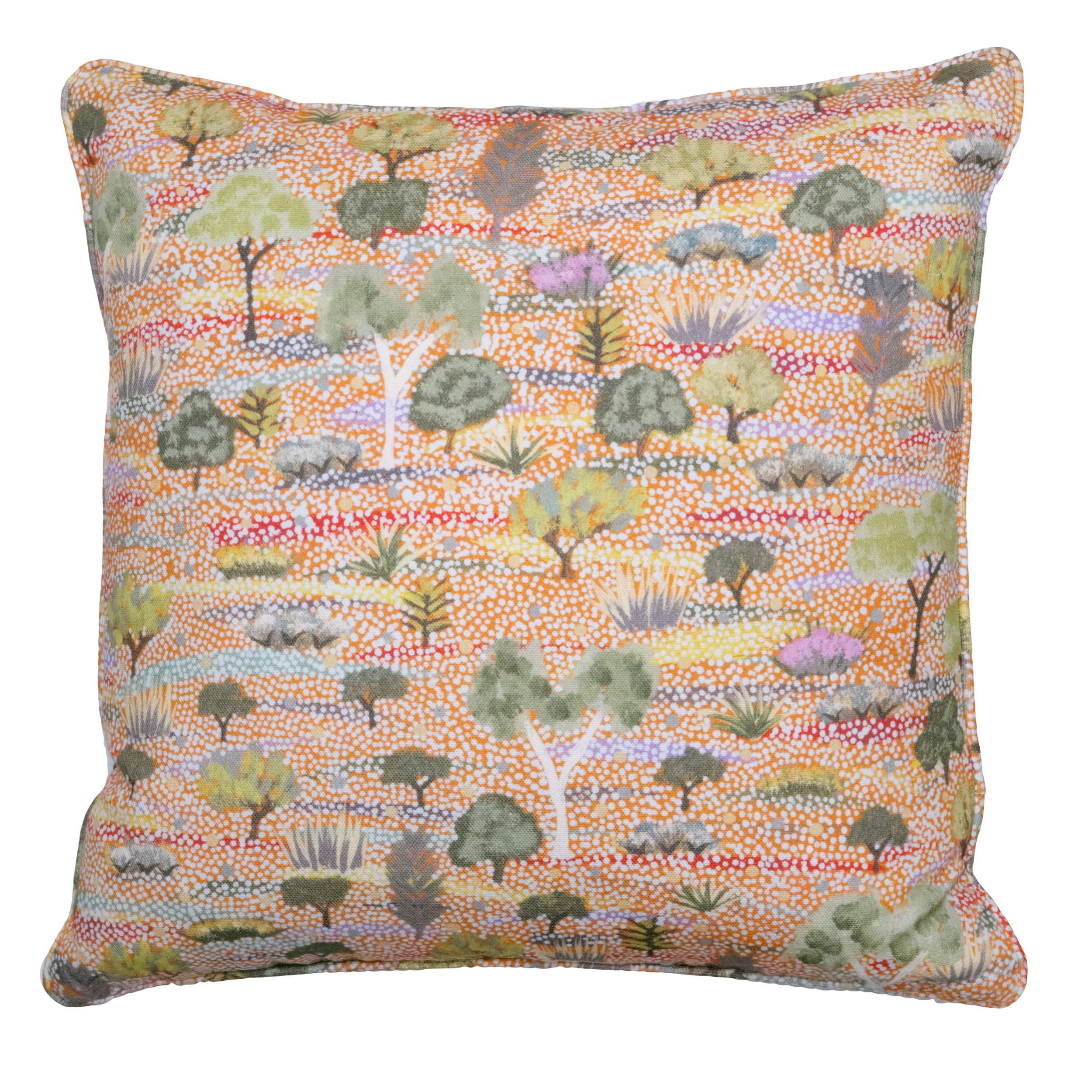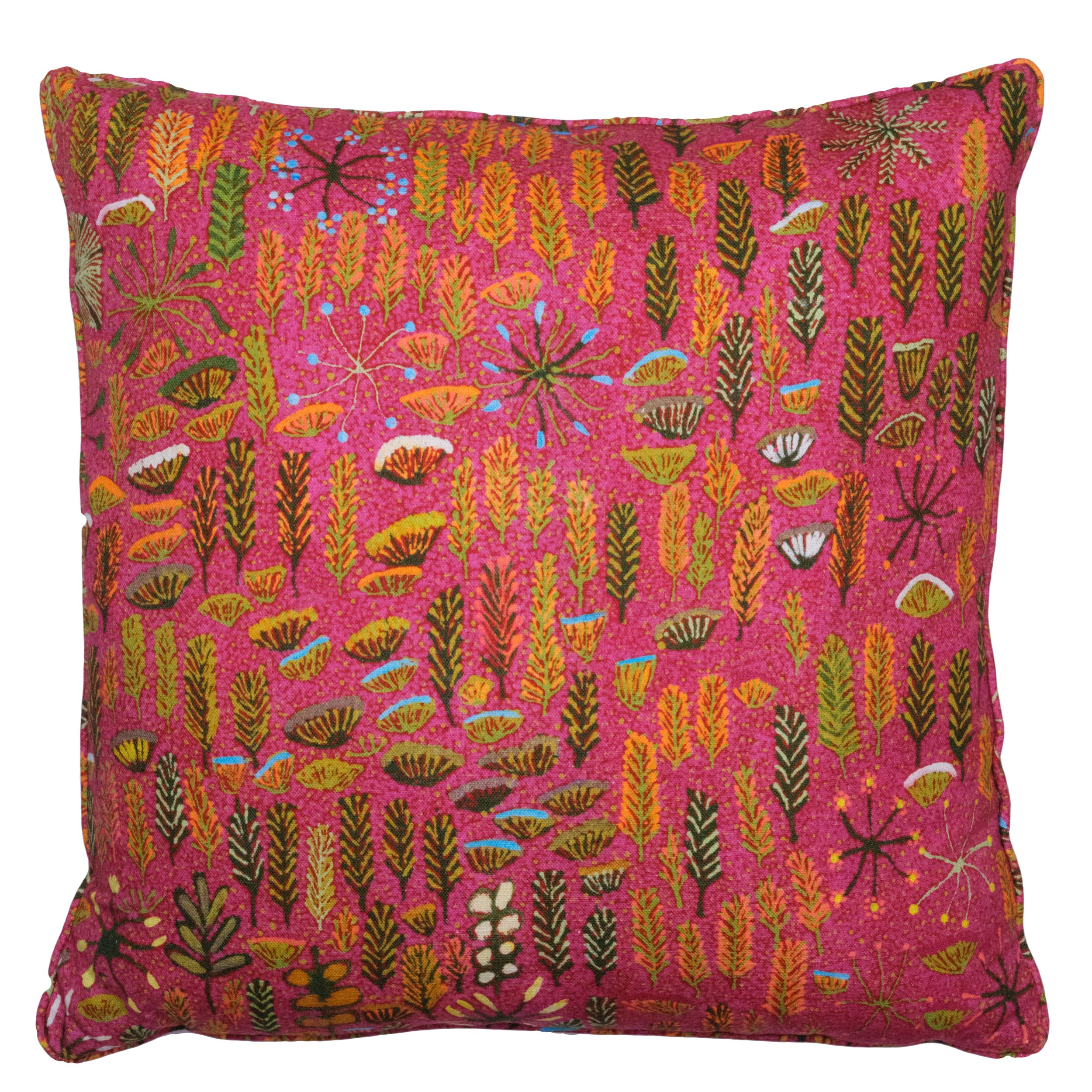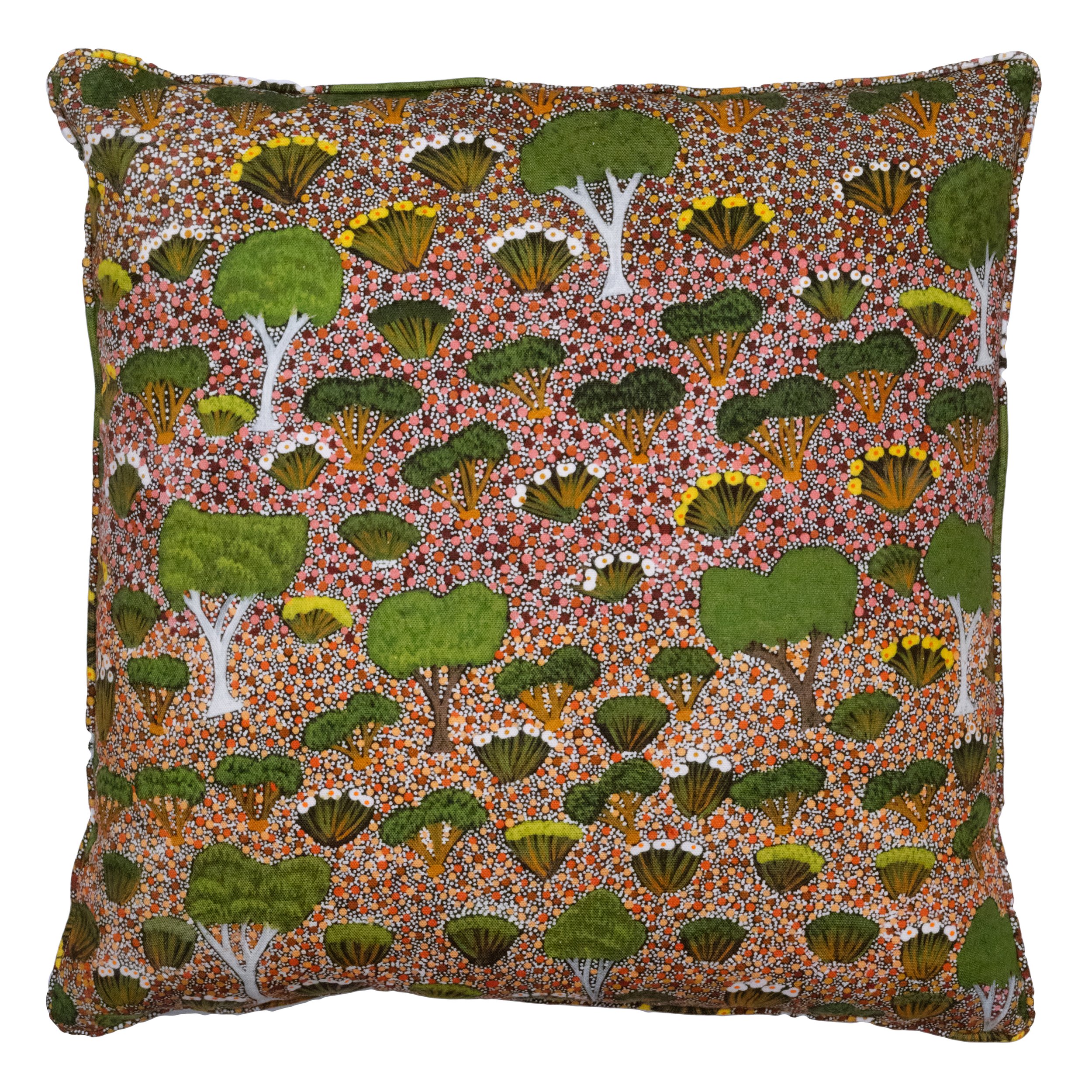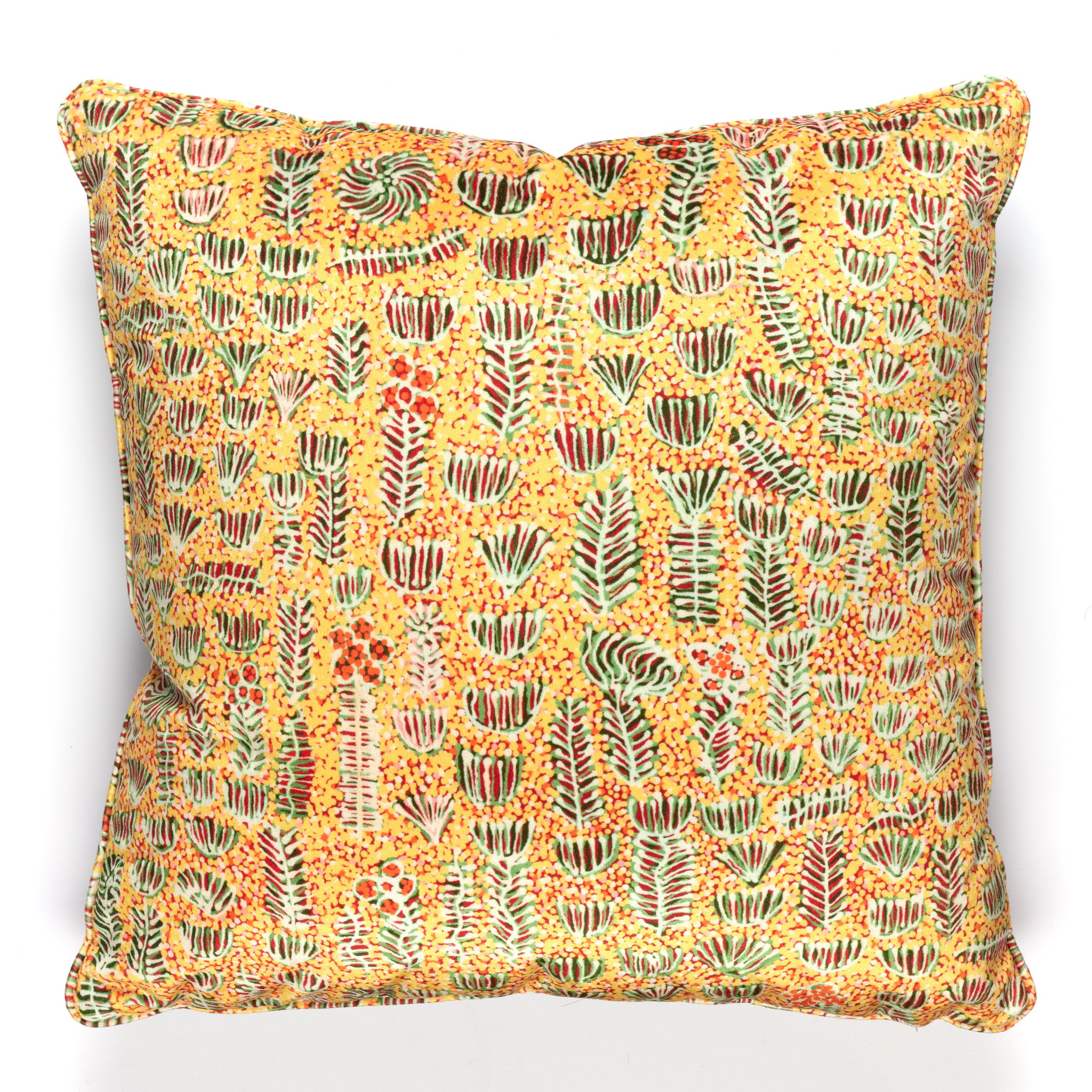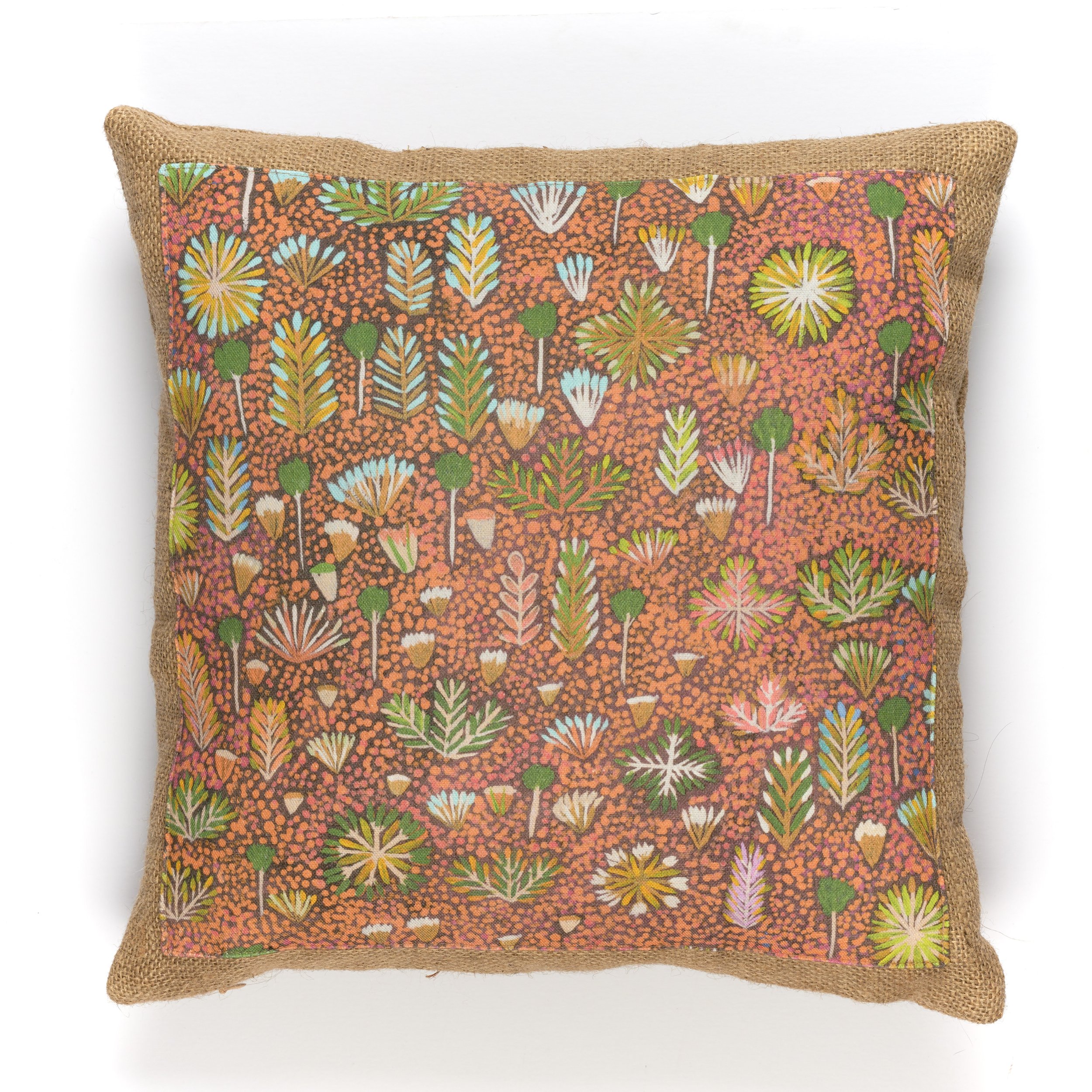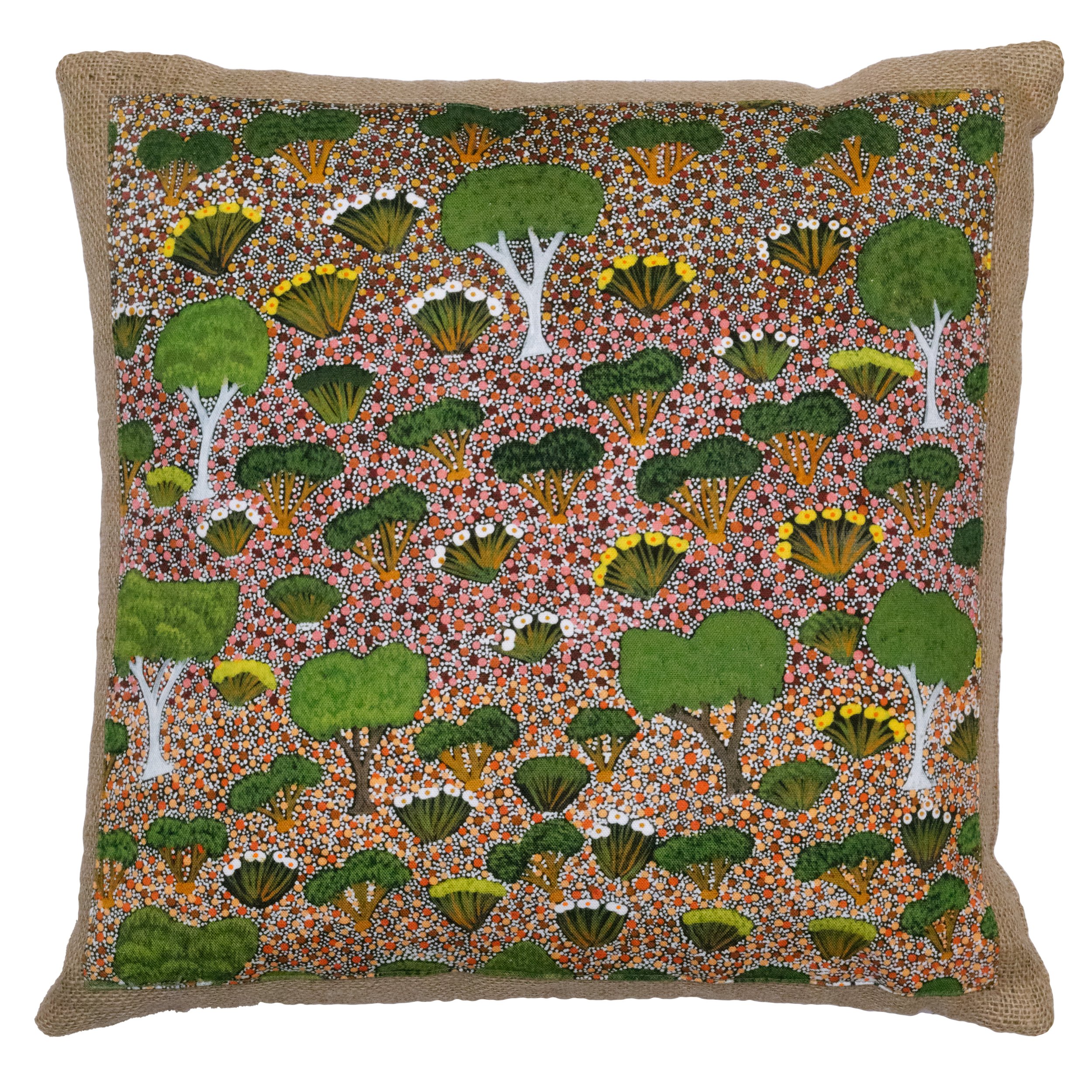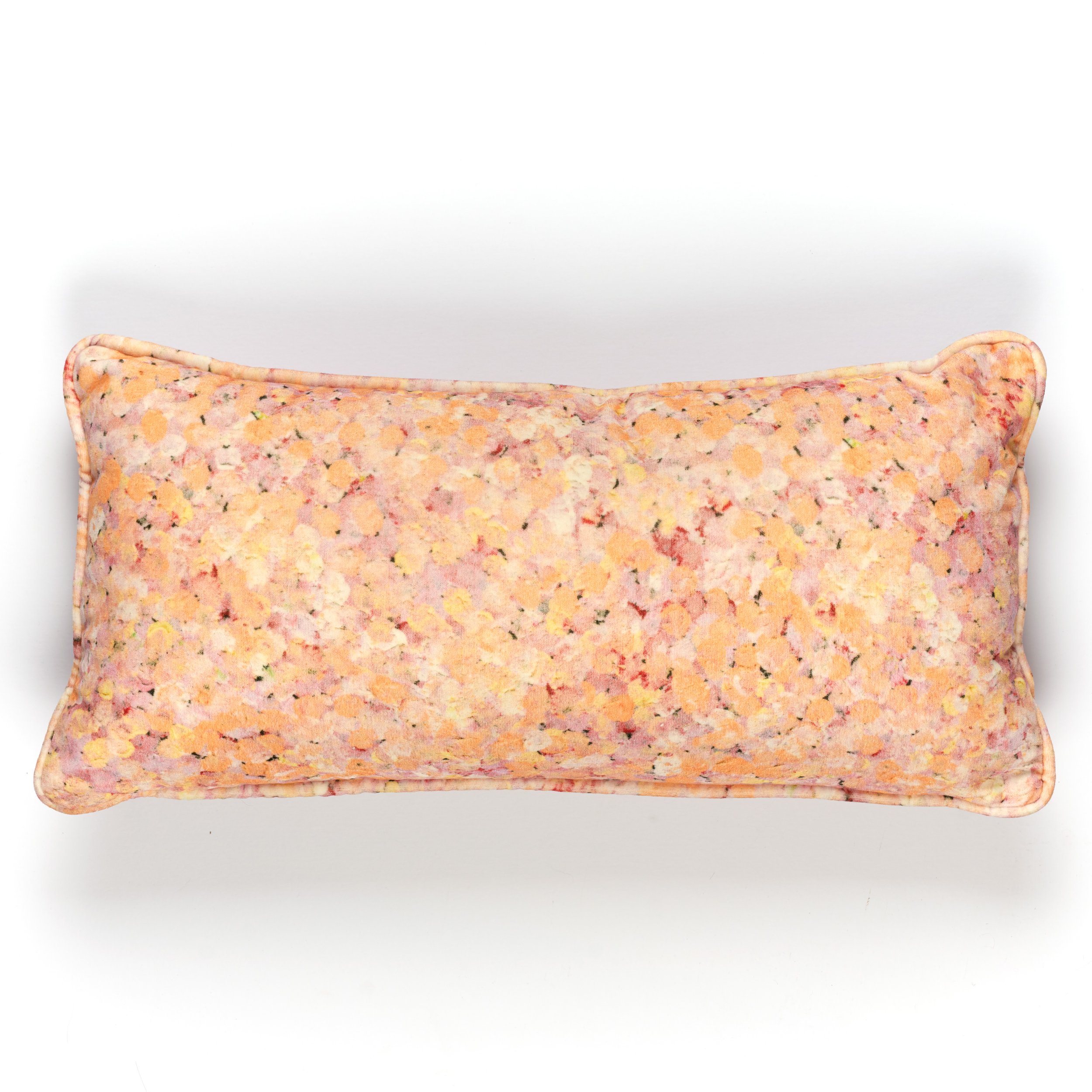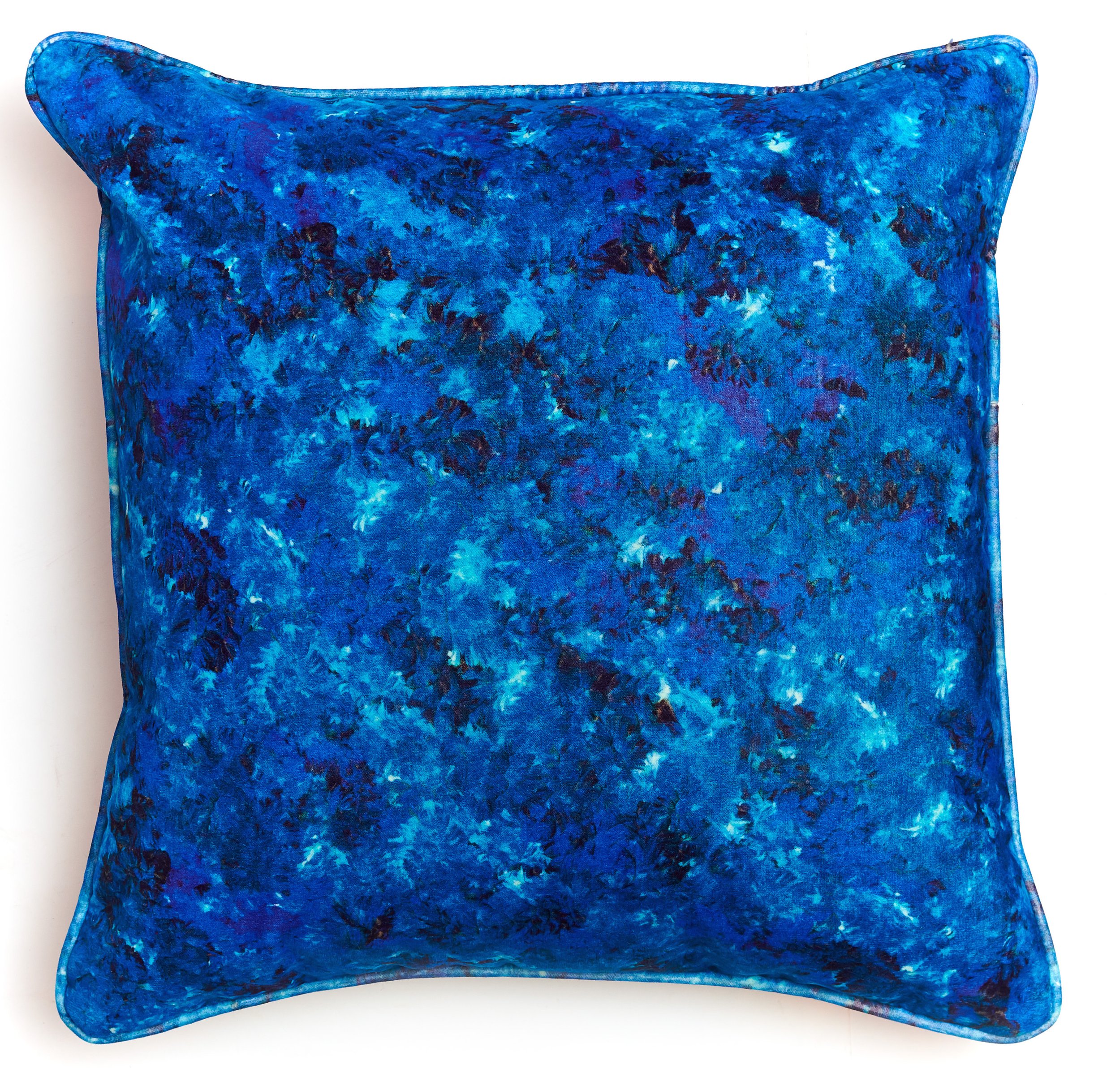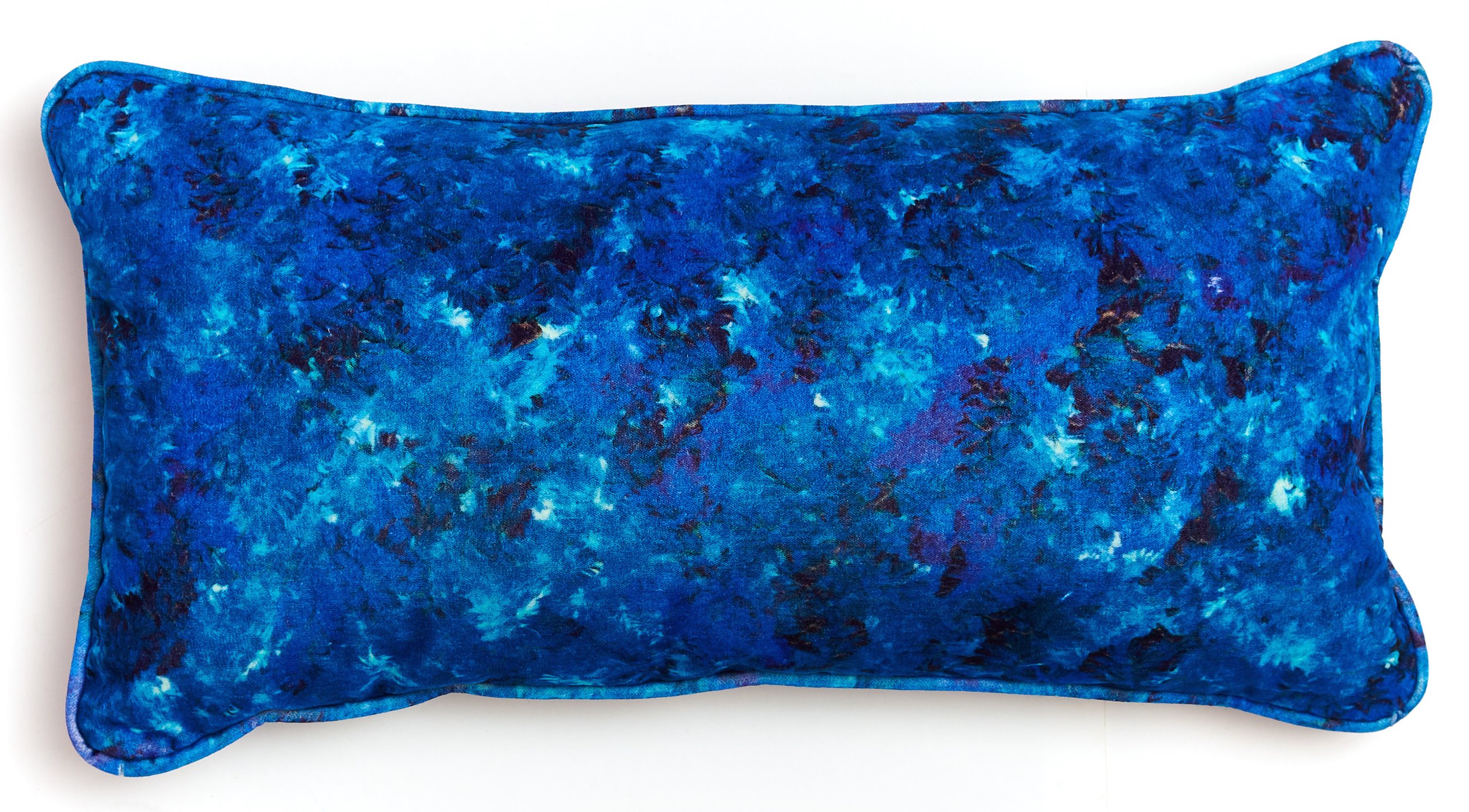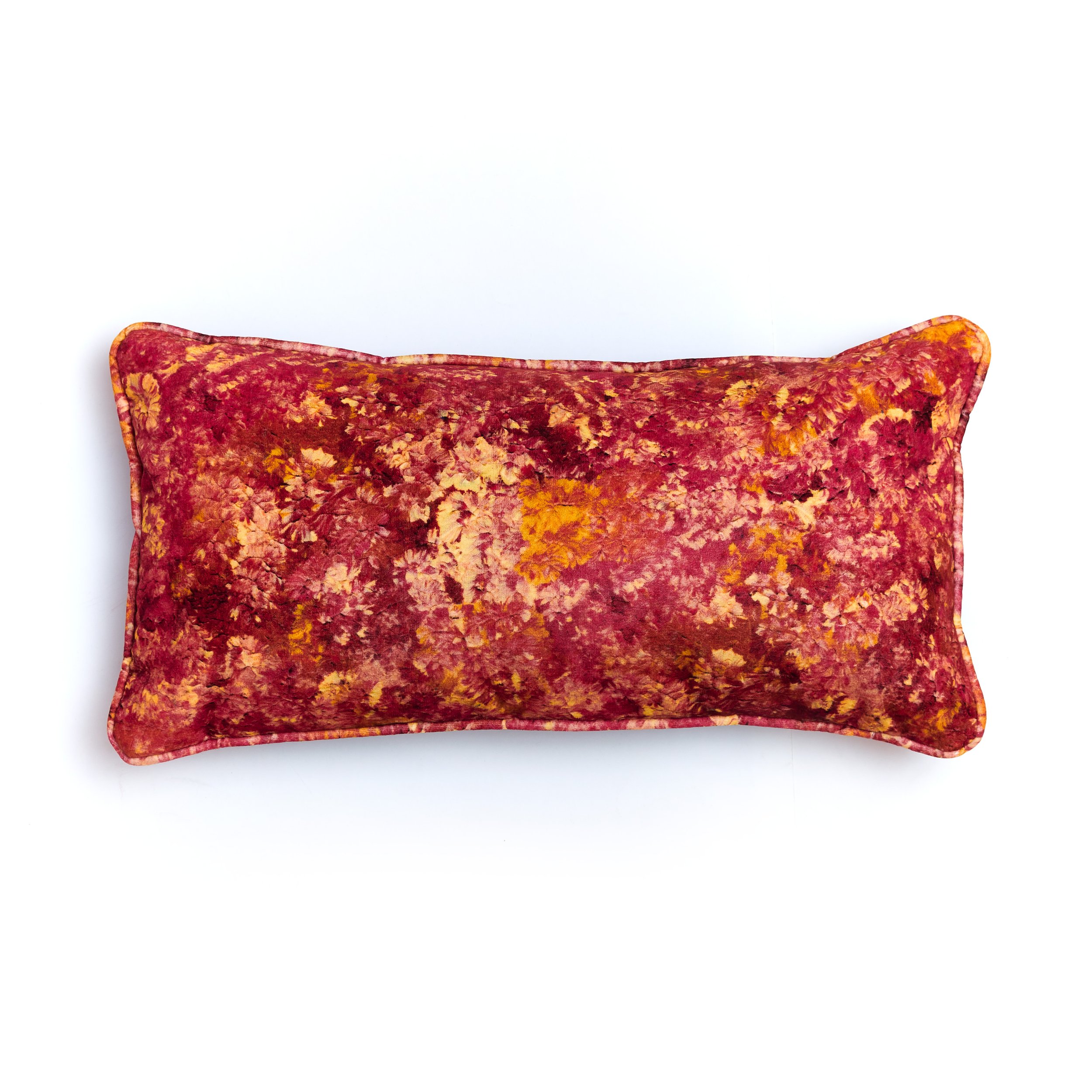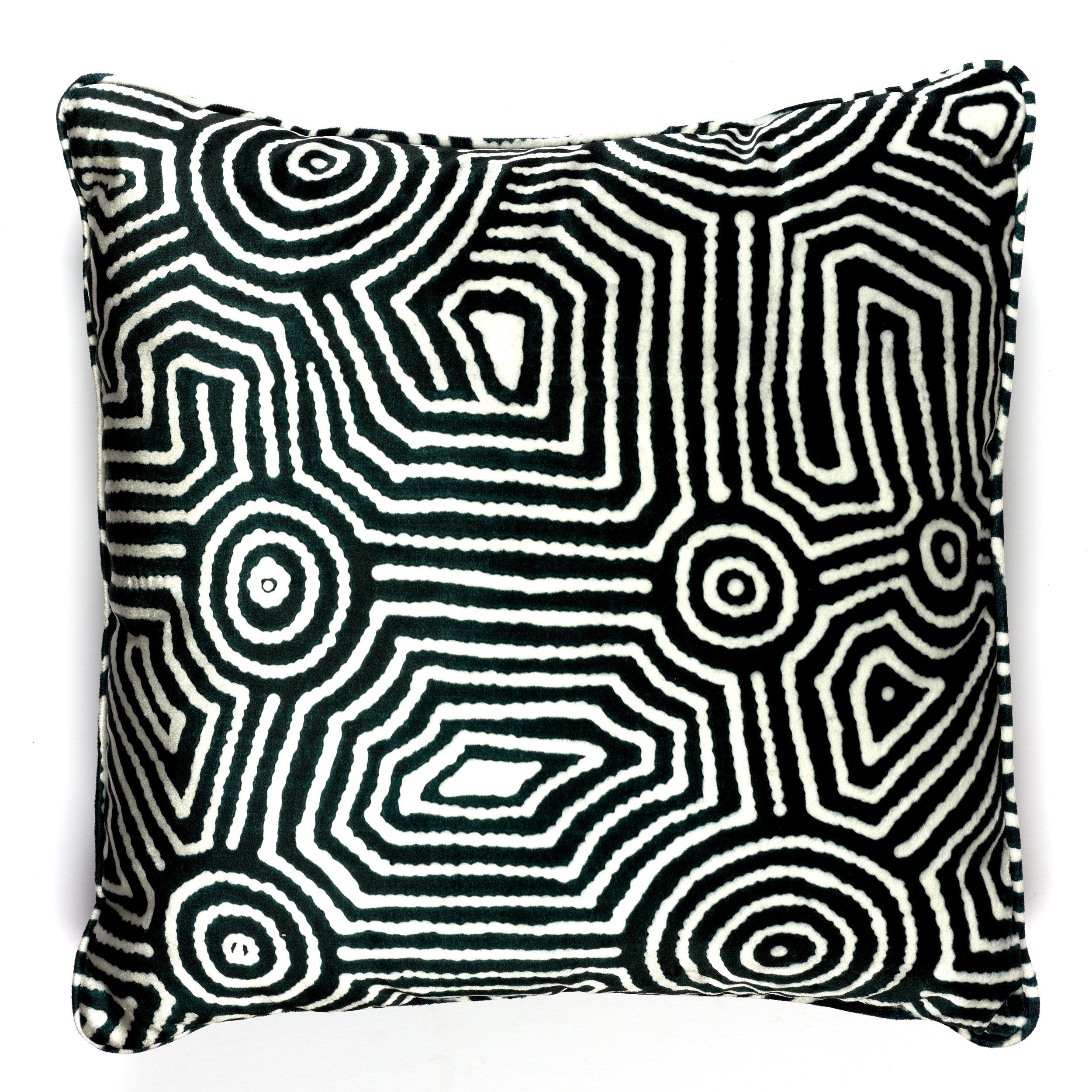At Bay Gallery Home our gorgeous ‘My Country’ cushions are flying out the door with Christmas orders for them flying in.
Infused with 70,000 years of ancient culture our cushions bring you back to a place where our connection to earths natural beauty is freshly appreciated. Our cushions designs are translations of Aboriginal creation myths, law, topographical mapping, bush medicine and bush tucker. As each one is translated from Aboriginal paintings you are, in essence, buying an artwork while supporting the Central Desert artists and communities we represent.
The fabric collection comes in 12 different designs seven of which match our wallpapers. You can choose between cotton velvet, poly velvet, avanti linen and cotton fabrics in any of the designs. They are available ready made in 50x50cm, 40x40cm and various sized bolsters all with hidden zippers and feather or poly infills. Or you can order bespoke cushions.
Over the next few weeks we’ll be sharing more Christmas ideas with you including our wonderful upside down umbrellas which are perfect gifts for the people with everything!
Please get in touch with alexandra@baygalleryhome.com or call 077776 157 066 for more information regarding our cushions or making service.
